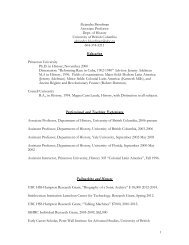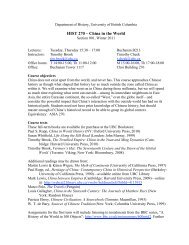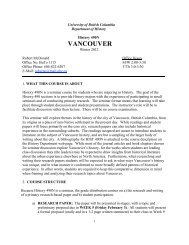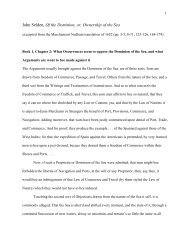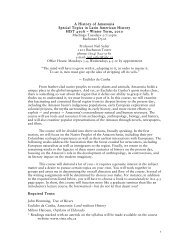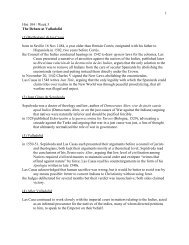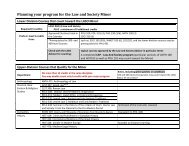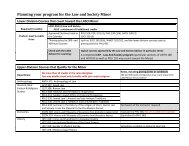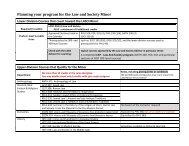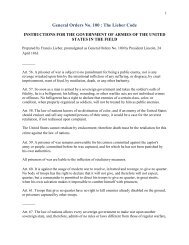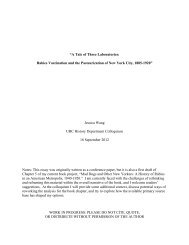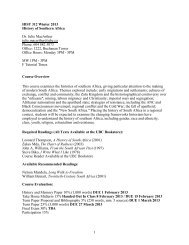Orientalizing the Pacific Rim: - History, Department of
Orientalizing the Pacific Rim: - History, Department of
Orientalizing the Pacific Rim: - History, Department of
You also want an ePaper? Increase the reach of your titles
YUMPU automatically turns print PDFs into web optimized ePapers that Google loves.
<strong>of</strong> <strong>the</strong> 19th-century as an attempt to make Christianity a practical element <strong>of</strong> everyday<br />
modern life, targeting <strong>the</strong> urban centers <strong>of</strong> America and <strong>the</strong> world. The mission <strong>of</strong> <strong>the</strong><br />
YMCA was to promote goodwill and harmony through institutions which organized<br />
social activities that encouraged fair play and cooperation. As an act <strong>of</strong> 'social gospel,'<br />
<strong>the</strong> YMCA was an attempt to expand religiousity from a private, individual orientation<br />
into <strong>the</strong> social acts <strong>of</strong> everyday life.<br />
In 1922, several YMCA missionaries who had returned from Japan pressed for a<br />
research survey into <strong>the</strong> widespread anti-Japanese agitation on <strong>the</strong> West Coast. 7<br />
George Gleason, <strong>the</strong> secretary <strong>of</strong> <strong>the</strong> YMCA in Los Angeles, and Galen Fisher, <strong>the</strong><br />
secretary <strong>of</strong> <strong>the</strong> Institute in New York, had both worked in an earlier time at <strong>the</strong> YMCA<br />
in Tokyo, and along with Davis <strong>the</strong>y were <strong>of</strong> a generation <strong>of</strong> highly trained and<br />
devoted ministers who had answered John Mott’s call to promote international<br />
understanding and goodwill through foreign missions. To <strong>the</strong>m, <strong>the</strong> increasingly<br />
strident calls for Japanese exclusion in California and <strong>the</strong> o<strong>the</strong>r <strong>Pacific</strong> states demanded<br />
attention. Davis, <strong>the</strong>refore, had been sent to <strong>the</strong> West Coast to find out what could be<br />
done.<br />
Since <strong>the</strong> first anti-Chinese riots <strong>of</strong> <strong>the</strong> 1870’s, Protestant missionaries had been<br />
one <strong>of</strong> <strong>the</strong> few allies <strong>of</strong> Asian immigrants in <strong>the</strong> United States. Concurrent with <strong>the</strong>ir<br />
7 Papers <strong>of</strong> <strong>the</strong> Survey <strong>of</strong> Race Relations, already cited, Boxes 11-14. Surveys had<br />
become a popular research and social reform device at <strong>the</strong> time, particularly after <strong>the</strong><br />
Pittsburgh Survey, a large scale effort carried out between 1909 and 1914 which<br />
investigated <strong>the</strong> conditions <strong>of</strong> industrial workers in that city. Considering topics such as<br />
health, sanitation, housing, wages, industrial accidents, education, crime, juvenile<br />
delinquency, and o<strong>the</strong>r social conditions, <strong>the</strong> Pittsburgh Survey became a model for<br />
reform-minded research. Paul Kellogg Papers, Social Welfare Archives, University <strong>of</strong><br />
Minnesota.<br />
6



